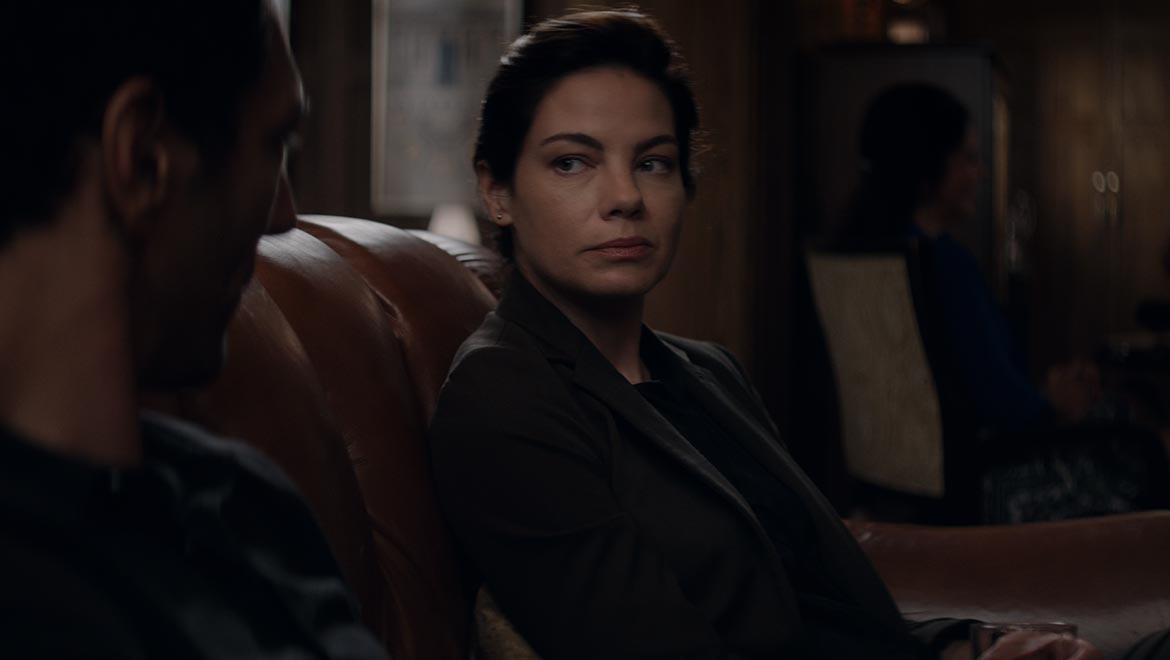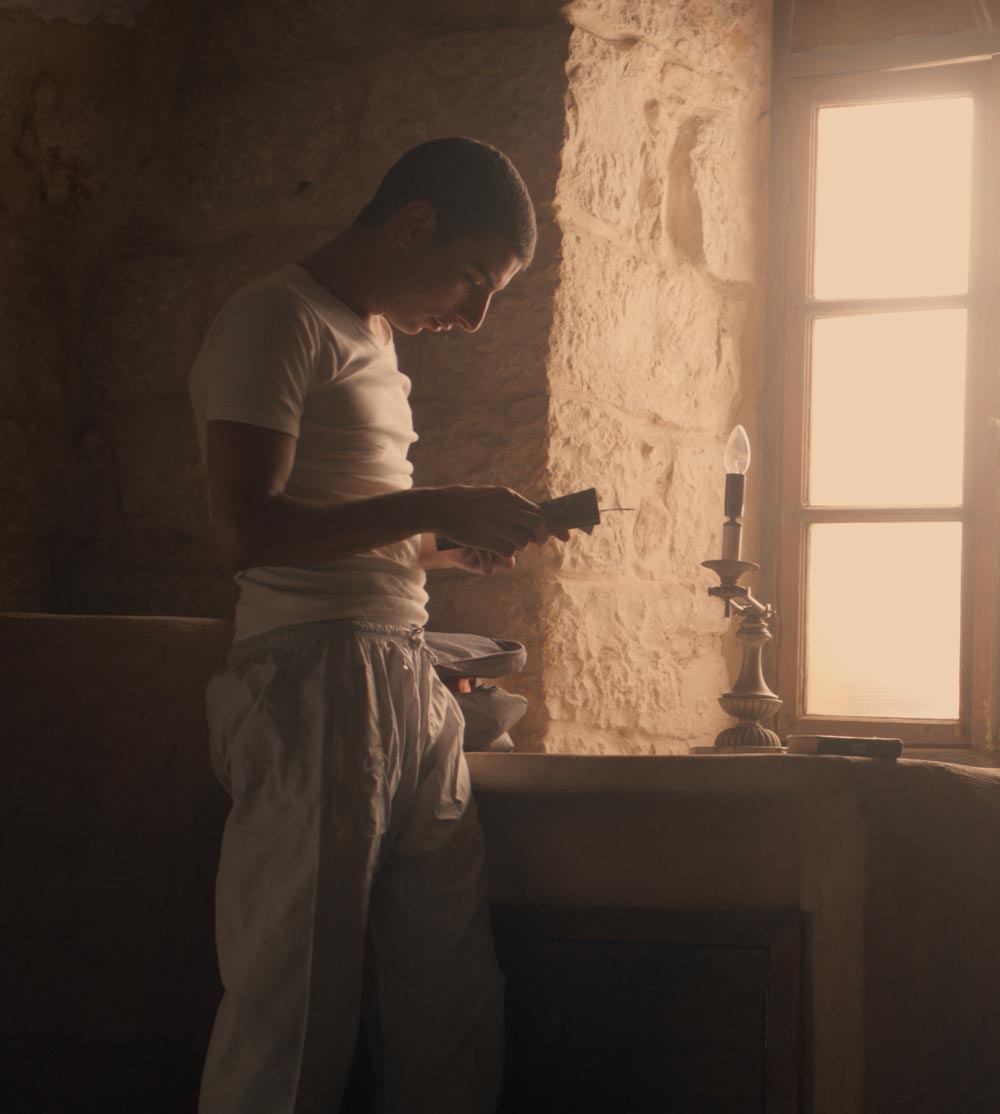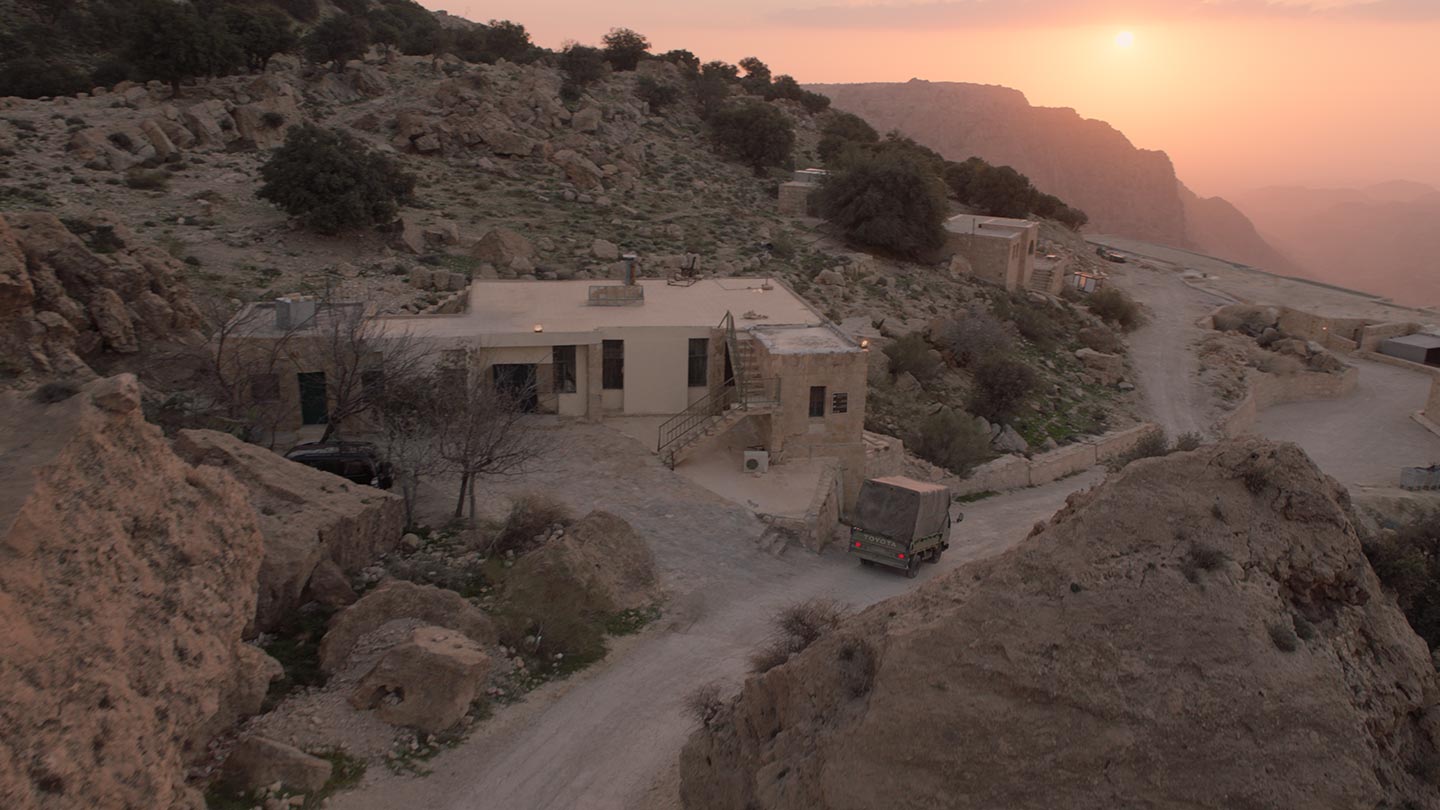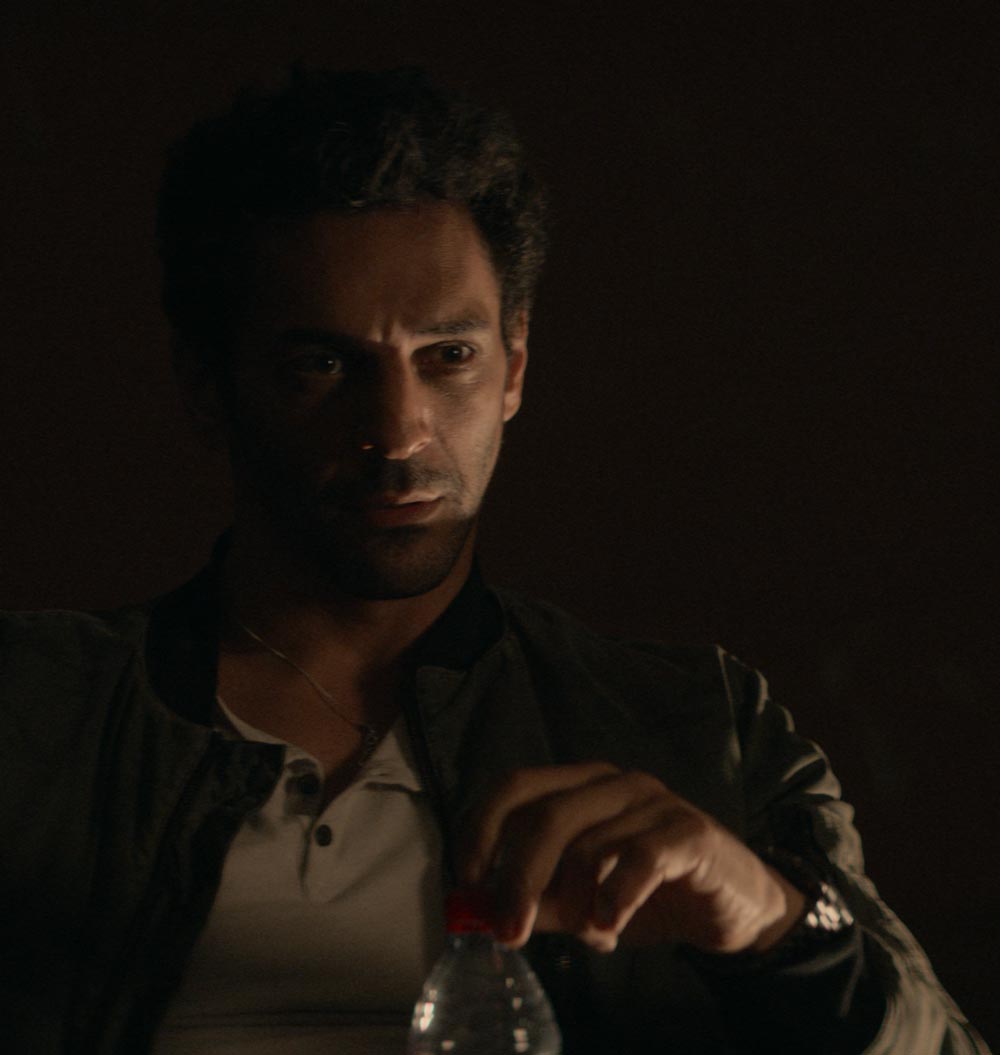
Messiah
Technicolor provided color and VFX from multiple of their locations, while conquering the complexity of a massive global production.
- Technicolor’s global footprint enabled the filmmakers to work where they preferred and needed to be.
- Technicolor expanded their Vancouver facility to handle the rigorous workload and the requirements of working in HDR.
- Vancouver was synced up with Los Angeles, where the looks were set with the director; while the DP was able to request adjustments from Toronto.
- Technicolor’s MR. X handled complex shots, from massive crowd duplication to a pivotal flashback scene.
- Among Technicolor VFX’s work was the creation of ~140 CG vehicle variants to produce huge amounts of traffic.
- Nearly 400 pulls went through Technicolor PULSE, totaling almost 1.4 million frames and 95TB of data.
- Underneath it all, Technicolor deployed an automated workflow whereby they could collect enormous amounts of data, from multiple vendors anywhere, anytime…
- And then automatically move it into post to be worked on immediately and simultaneously by colorists in two different locations.
Messiah is a 10-episode series, now streaming on Netflix, about a CIA officer investigating a man attracting international attention and followers through acts of public disruption. She embarks on a global, high-stakes mission to uncover whether he is a divine entity or a deceptive con artist. Created by Michael Petroni, with episodes directed by James McTeigue (6 episodes) and Kate Woods (4 episodes), and shot by Danny Ruhlmann, ACS, the visually stunning series was a global undertaking, with production and storylines taking place in multiple locations across the globe; and Technicolor post and VFX houses being leveraged across Los Angeles, Toronto, and Vancouver.
Capturing the Look with Cinematographer Danny Ruhlmann, ACS
The series is set against the backdrop of Texas (shot in New Mexico and a studio), Washington DC (shot in DC and Nashville) and the Middle East.
“Because the story is about these different storylines in different parts of the world, but kind of all intersecting together based on this one character and the ripple effect from his character across the world, there had to be authenticity in each location, but overall a cohesiveness that wasn’t distracting,” stated Ruhlmann.
“Michael and James wanted to be very clear visually when the series jumped from one location to the next, so the audience were clear that the locations and the storyline had changed, while still looking authentic to the respective locations and storylines. So, I just needed to work out a way of defining those different locations visually. And that was my one big challenge.”
Ruhlmann and team did a technical scout through the Middle East, shooting lots of stills which, over time, helped him plan how the show would visually unfold.
“For the portions taking place in the Middle East we shot a lot in the desert. And that is a rocky desert. It's quite gray and almost kind of monochromatic in ways. It was nearly winter when we were there and the sky was really bright and white but to the point of being bleak. So, we embraced that and made the images feel a little bit de-saturated but with warm tones and slightly monochromatic with the white sky giving us a feel of harshness and dirtiness.”
“The Texas storyline revolves around a family dynamic, so we utilized the beautiful vista from that part of the world (even though we shot in New Mexico, it's obviously not that far away from Texas). We were there in the summer and had these blue skies and beautiful sunsets, and I wanted to embrace that. I wanted to see the contrast between the blue sky and the warmer tones of the environment. Shooting in New Mexico in their ‘wet season’ also allowed us to capture some really dramatic thunderstorms and cloud formations which to me represented the dramatic family dynamic in the storyline with overall warmer tones.”
Contrasting the warmth of Texas was Washington, DC. “A lot of that storyline takes place in the White House and interior locations, we also shot on location in DC, around the Lincoln Monument and the reflecting pool which added to the authenticity of the show. Cooler office interior and generally cooler exteriors.so we embraced a contrasting color palette there, which is slightly cooler than we had in the Texas storyline. Ultimately, we didn't want to push any of it to the point where we would hit you over the head with it. It had to feel a part of the bigger picture.”
“We also used other tools to help define those storylines, including distinct camera movements. Varying by location- Texas was shot primarily dolly and track, Washington, DC, Steadicam and the Middle East handheld- it was another way to visually differentiate the locations.”
Global footprint grows with expanded Vancouver studio
One of the top priorities for Messiah was being able to accommodate the filmmakers wherever they were located or preferred to work. This enabled producing director James McTeigue (6 of 10 episodes) to work again with Supervising Senior Colorist Maxine Gervais in Los Angeles, a request he made after previous successful collaborations with her on features. Meanwhile, Ruhlmann could remain in Toronto where he needed to be for his next project, while Senior Colorist Anne Boyle was performing her work in Vancouver. Technicolor specially expanded their Vancouver facility to handle the workload and timeframe of what was the equivalent of a 10-hour feature. On top of that, Vancouver was built out to handle the requirements of a show where HDR was the hero grade.
“We did some pretty extensive upgrades to our facility in preparation for Messiah,” says Kenny Vicent, Operations Manager, Technicolor Vancouver. “We built out a 4K HDR DolbyVision certified finishing suite and a 4K HDR 5.1 Online suite (installing a Baselight X and Baselight Assist as the primary finishing and online tools, respectively). We bumped up our network bandwidth fivefold to 10G. And we’re capable of 4K HDR transmitting between Vancouver and the LA facility now.”

Color Finishing Without Borders
As they entered Post, Ruhlmann met with Gervais in LA to review the looks, Gervais expands: “Washington is cooler, it’s a little more desaturated, it has some of that institutional office gray look. Texas is richer and lusher; it’s a little more vibrant with more colors. And the Middle East has a dustier feel, but also a nice warmth, with a bit less color separation. So narratively, you can always distinguish each place and know where you are. It’s subtle – visually and aesthetically – with a familiarity that takes the audience back to each location.”
With the looks established, a lot of the work could be performed in Vancouver, so Technicolor developed a seamless way for Gervais and Boyle to share the project in real-time via synced Baselights and a centralized database. The system that was set-up enabled Gervais to see Boyle’s work instantly in LA, and vice versa – Boyle could see any of Gervais’ updates or changes to it and carry on from there. As the work progressed in this way, reviews and supervised sessions with the producing director continued in LA, while through Technicolor Toronto, Ruhlmann was also able to work closely with the team.
“I could go to Technicolor in Toronto to see what Maxine,James and Michael were working on and make notes on it there,” said Ruhlmann. “I felt like I was in really good hands with them [and their] great visual aesthetic. With just a few minor adjustments I wanted to make, I think it came together really well.”
But collaborating across several different locations requires a concerted strategy explains Boyle: “A team sharing and grading a project like this was very experimental. People do often team grade and have remote grading sessions – but seamlessly working on a show together from that distance, as if you’re one team, in one facility, that's taking it a big step further.”
“The flow of data had to be managed in a particular way to allow the media to be accessed simultaneously,” explains Technicolor’s Mike Dillon, Director of Strategic Technical Operations. “This made it ‘a perfect handshake’ between the two sites; Maxine and Anne could seamlessly pull up the same project metadata, the framing, the color science – basically everything that had been set up, and then anything that the other had done, instantly.”
Adds Boyle: “Beyond the technical aspects, Maxine made it work creatively by setting out the guidelines very clearly at the beginning and providing guidance along the way, so everyone had the same vision and was always on the same page.”

Technicolor’s MR. X handled the massive crowds and other complex shots
Also making the vision a reality were VFX Supervisor James Cooper, VFX Producer Sam Banack, CG Supervisor Mai-Ling Lee, and the team at MR X.
“Beginning with episodes one and two, we did huge crowd replacements and duplication on this show,” said Cooper. “The messiah-like character amasses thousands of followers, and at one point he’s leading them through the desert to the Holy Land. We turned about 100 extras into thousands through 2D crowd replacement and massive CG crowd rendering. Prior to that, when he’s preaching at St. Thomas Gate in Damascus, we also did tank duplication with firefighting and missiles landing as they fall under attack – at the same time as a giant sandstorm swallows up the city. It’s pretty epic.”
Other complex scenes with crowd duplication, environment and other work from MR. X include the messianic leader at the Washington Monument walking on water across the Reflecting Pool in episode 6 (keep an eye out for the CG ducks swimming and taking flight in this scene too); and, in a flashback sequence in episode 9, creating a Tel Aviv street and full CG replacement of a vehicle with a car bomb in it.
“That was a big scene, probably the most complex and creatively challenging we worked on, with lots of effects work and animation,” recalled Cooper. “There were two boys in the vehicle with their mother, and we had to do full digital replacements of the brothers. It’s a big story point, so we had to create the exact right type of effect and be very precise about it.”
Technicolor VFX created the tremendous traffic and more
In addition to the huge amount of crowd work on this show, there was also a lot of vehicle duplication to be done for the Washington scenes. Enter Technicolor VFX’s LA team, led by Creative Director Paul Ghezzo and VFX Producer Lisa Goldberg.
“The type of work we did was predominantly creating CG vehicles and the insane amount of traffic that follows the arrival in Washington,” explained VFX Supervisor Archie Donato. “We're talking about creating roughly one hundred and forty variants of vehicles and color versions of each that we could then mix and match to produce all this traffic – work that we did prior to production starting so that the assets were ready to go and could be populated into the shots.”
Doing so presented another challenge to the team. Because the shots were so wide, existing two-way traffic could be seen and had to be removed. The filmmakers wanted all of the traffic going in one direction, following the lead vehicle. Shutting down D.C. traffic wasn’t possible, and with Technicolor VFX’s work it wouldn’t be necessary.
Though the majority of their work appears in Washington, the team was flexible enough to handle shots for other locations as well. These included shots for the Middle East – from satellite and drone imagery to cloning people to make a mosque appear full – to architectural extensions for a mega church in Texas and a scene where they extended the shot of a convoy of police cars on a flat open highway all the way to the horizon.
Technicolor PULSE streamlines VFX asset management
With a multitude of vendors and huge amounts of data, Technicolor PULSE was engaged to handle the VFX asset management process. Between the dozen or so vendors on the show, there were nearly 400 pulls submitted through PULSE, totaling nearly 1.4 million frames, and 95TB of data processed and delivered – with an average delivery time under 90 minutes per request.
“When we built the backbone infrastructure for Messiah,” says Dillon, “what we were essentially doing was laying down the tracks so that applications like PULSE could run. The workflow processes are integrated with PULSE, so that when data comes in, a log is sent to PULSE and it gets updated with the visual effects. The long-term vision is to integrate a workflow engine with Shotgun, Sonar, and all these other cool tools. Then with user-friendly portals, producers could customize and create templates for different shows, maybe integrating certain tools that a particular studio likes to use.”

Building an automated workflow solution to manage the complexity
As might be imagined, all of the moving parts on Messiah required extreme coordination and technical alignment behind the scenes. As such, Technicolor worked with the Netflix team on a proprietary technological infrastructure that could support all of the artistic collaborators and the huge amounts of data to be funneled into the pipeline.
The team – including Dillon, Vicent, Daniel Hasenstaub (Director, Operations) and Jeremy Stapleton (Director of Software Development) – went on to deploy an automated solution to holistically and easily manage all of the complexity for Netflix – and anyone touching the project creatively, no matter where they were located. The workflow solution they developed enabled Technicolor to automatically collect the huge amounts of data coming in from 12 different vendors – 24 hours a day from multiple locations. From there it quickly and automatically moved into post to be worked on immediately – in-sync and in real-time – at both Los Angeles and Vancouver.
The automation starts as soon as a visual effects team hits send. Once received, data files are automatically dispatched to Technicolor Vancouver using Pixspan's PixMover™ data delivery and encryption solution. PixMover™ multiplies the transfer speed for VFX content 2X to 5X faster than traditional WAN transfers, achieving unprecedented transfer performance levels.
For asset tracking, there’s a data management tool built into the solution that flags if a shot is missing, for example, or if a package has stalled and not been delivered. This enables team members to take immediate action to rectify, minimizing potential time lost on time-sensitive productions.
“We not only move the data as quickly as possible,” says Dillon, “we own it. We understand where it is at all points. This allows Technicolor to be first responders; to be incredibly accurate and efficient in communicating when something’s missing or if any other issues arise. We're going to know about it and we're going to be on it. It also means as a producer, we can prioritize the work for maximum efficiency – because we instantly know which episodes are good to go for the editorial team to start working on.”
“The way we’ve been able to deploy an automated workflow to streamline the complexity of the pipeline has been really effective,” concludes Dillon. “Messiah was a perfect example because of the high volume of data from multiple vendors over a 10-episode run. We were able to keep all pieces organized and moving as quickly as possible through the pipeline. After the success with Messiah, that’s the vision we're pursuing and expanding upon for the future.”
You can see Messiah streaming now on Netflix.